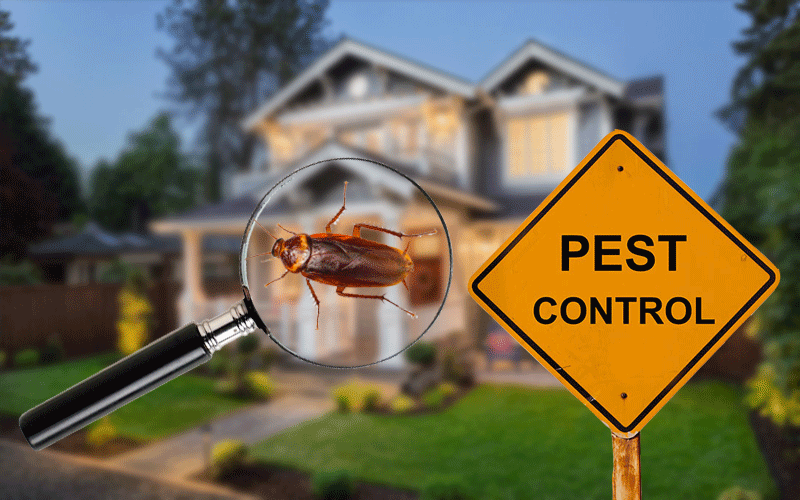Specialist A1 Charlotte Bed Bug Exterminator - High Quality Solution Guaranteed
Wiki Article
Bed Bug Treatment Malfunction: Comparing Chemical Vs. Non-Chemical Solutions
In the realm of insect control, particularly when dealing with the persistent concern of bed insects, the option between chemical and non-chemical therapy remedies can be a pivotal one. Both strategies offer unique benefits and disadvantages, affecting variables such as effectiveness, safety and security considerations, and total price. By checking out the nuanced information of each method, a clearer understanding of which course to go after in resolving a bed insect infestation can be attained.Effectiveness of Chemical Treatments
Chemical treatments for bed insect invasions have been commonly acknowledged for their fast and potent efficiency in eliminating these bugs. When taking into consideration the efficiency of chemical therapies, it is vital to recognize that they can give a quick and extensive service to a bed bug problem. Specialist pest control specialists commonly rely upon insecticides to target bed pests at different phases of their life process, including fairies, eggs, and grownups. These chemicals normally work by interfering with the bed bugs' nervous system, resulting in paralysis and ultimate death.In addition, chemical treatments have the benefit of offering residual effects, suggesting that they can continue to remove bed insects even after the initial application. This recurring action is particularly useful in combating any possible re-infestations. In addition, the fast activity of chemical therapies can bring alleviation to people encountering extreme bed insect infestations, allowing them to reclaim control of their living rooms promptly.
Safety And Security Worry About Chemical Solutions
One essential aspect that calls for careful factor to consider when utilizing chemical solutions for bed insect treatment is guaranteeing the security of owners and the atmosphere. Direct exposure to specific chemicals made use of in bed insect treatments can lead to breathing problems, skin inflammation, or other damaging responses, particularly in people with pre-existing problems or sensitivities.Moreover, the ecological impact of chemical options is one more substantial consideration. Some chemicals made use of in bed pest treatments might be dangerous to helpful insects, wild animals, and ecological communities if they seep right into the soil or water systems. It is vital to make use of chemical therapies judiciously, adhering to safety guidelines, and considering much less poisonous alternatives to minimize these risks and make certain the efficient and safe administration of bed pest problems.
Advantages of Non-Chemical Approaches
Thinking about the potential security problems and environmental impact connected with chemical options for bed bug treatment, exploring non-chemical approaches offers an appealing alternative with several distinctive benefits. Non-chemical approaches use a much safer alternative for houses, especially those with animals, people, or kids conscious severe chemicals. These techniques eliminate the risks of direct exposure to toxic compounds, lowering the possibility for damaging health and wellness results. Moreover, non-chemical treatments are eco-friendly, as they do not add link to air or water air pollution, making them a lasting option for parasite control.Additionally, non-chemical remedies can be reliable in targeting bed pests, including hard-to-reach locations where chemical treatments may not penetrate - A1 charlotte bed bug exterminator. Approaches such as heat treatment, vacuuming, vapor cleansing, and cushion encasements offer comprehensive elimination without the usage of unsafe chemicals.
Limitations of Non-Chemical Treatments

Additionally, non-chemical therapies commonly need multiple applications to achieve successful removal. This can be time-consuming and may not constantly assure total elimination of all bed insects and their eggs, specifically in hard-to-reach or surprise places.
Furthermore, the success of non-chemical therapies greatly depends on appropriate execution and thoroughness, which can be challenging for individuals without professional know-how. Inadequate application of non-chemical techniques might lead to incomplete eradication, leading to persistent infestations and the requirement for extra treatments.
Therefore, while non-chemical treatments have their benefits, it is necessary to recognize these constraints and consider them when determining the most efficient strategy for managing bed bug infestations.
Expense Comparison: Chemical Vs. Non-Chemical Options
Offered the constraints connected with non-chemical therapies, a necessary aspect to review in the context of bed bug monitoring is the expense contrast in between chemical and non-chemical options. Chemical therapies usually entail the application of pesticides by specialists, which can vary from $250 to $900 per space, relying on the seriousness of the invasion and the dimension of the area to be treated. In contrast, non-chemical treatments like heat therapy or heavy steam can be much more pricey, with costs varying Web Site from $1,000 to $6,000 for an entire home. While the initial price of chemical therapies might appear reduced, multiple therapies may be required to totally get rid of the problem, potentially increasing the total expense. On the other hand, non-chemical alternatives might supply a much more lasting and environment-friendly service, although they can be pest control fumigation cost-prohibitive for some individuals. Ultimately, when taking into consideration the cost of bed insect therapy choices, it is essential to consider the in advance expenses versus the efficiency and lasting sustainability of the selected approach.Conclusion

Thinking about the potential security worries and ecological impact associated with chemical services for bed insect therapy, discovering non-chemical approaches provides an appealing choice with numerous distinctive benefits.Given the constraints associated with non-chemical therapies, an important aspect to evaluate in the context of bed bug management is the price comparison between chemical and non-chemical options. In comparison, non-chemical treatments like heat therapy or steam can be more costly, with costs varying from $1,000 to $6,000 for an entire home. While the first expense of chemical treatments may seem reduced, numerous therapies might be called for to totally remove the infestation, possibly enhancing the overall cost.In verdict, when comparing chemical and non-chemical bed insect therapy alternatives, it is necessary to think about efficiency, security, benefits, limitations, and cost.
Report this wiki page